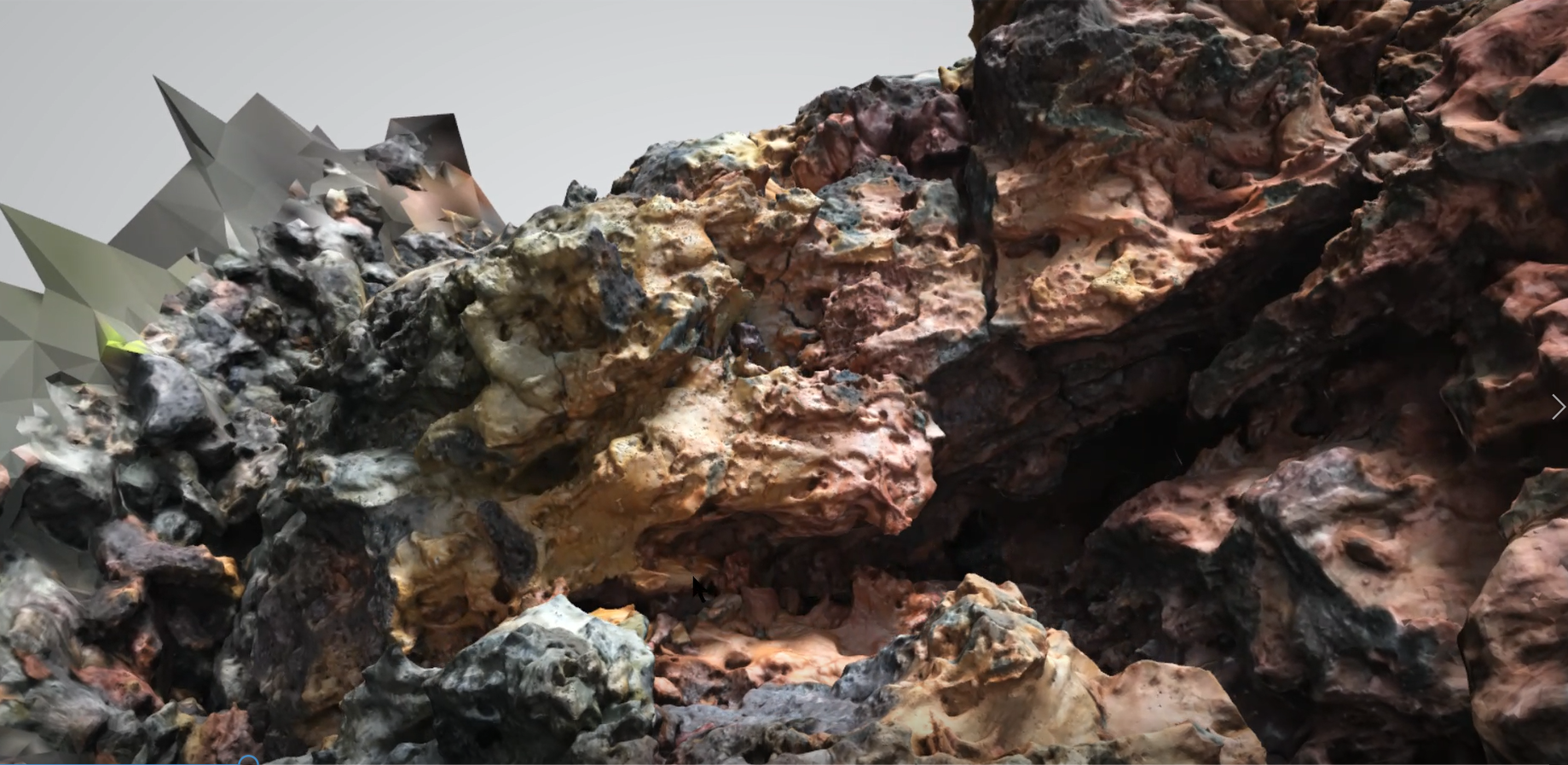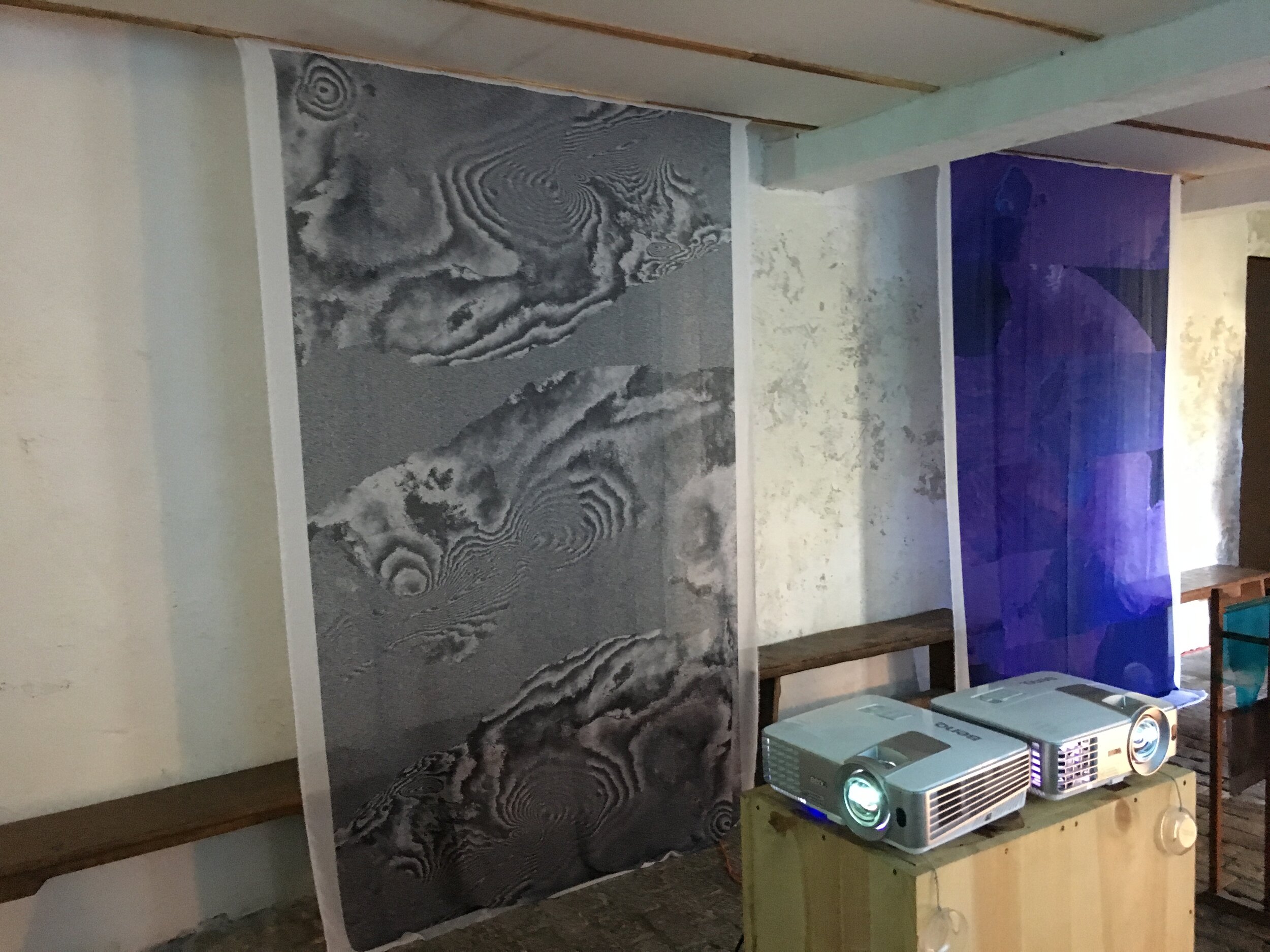Pele and Plastiglomerate
Shown at CONTACT at the Hawaiian Mission Houses Historic Site, Honolulu, Hawaii; and in the Misava Exhibition at the Fak’ugesi Digital Innovation Festival and Overkill Festival Exhibition, and is currently on display at Warm Data
Two-channel video with audio, 3D models, 3D printed sculpture, bioplastics, rocks, digital prints on chiffon
Pele and Plastiglomerate considers the mediation of Hawai’i Island via technological monitoring, plastiglomerate, a new geological layer discovered in Kamilo Beach,se as well as bioplastics as alternative biodegradable materials to petrochemical plastics. Plastiglomerate was formed by commercial plastics washed ashore from the ocean melted with sand and rock to form a new conglomerate.
Kānaka see Pelehonuamea, a volcanic deity and goddess, as our living elemental progenitor. She is associated with the volcano Kilauea and a living entity in Halema’uma’u crater, including the land and lava rocks that extend from Kilauea’s reach, and throguhout the islands. As researchers and geologists have primarily focused on plastiglomerate as being a marker of the Anthropocene, they have not considered the spiritual connections it has to Hawai'i and it's peoples. Plastiglomerate can be seen as an invasion - the melding of toxic/colonial and petrochemical substances with Pele’s sacred and spiritual body - as a metaphor for the desecration of our lands with the continuous arrival of western beliefs, new materials and technologies. As an extension of techno-colonialism of Hawai’i Island, drones and satellite monitoring through LIDAR and InSAR technology, positioned above the crater, actively shoot lasers on the land to detect surface deformations at Kilauea’s summit. This technological monitoring can be seen as a continual invasion her boby. As this technology attempts to predict Pele's movements, she can never be fully predicted. Chants honoring Pelehonuamea are combined with LIDAR and aerial drone footage, juxtaposing these two systems of practice.
Pele and Plastiglomerate meditates on the materiality of lava, the spirituality embedded within, and potentialities for new material rituals. It repositions satellite data next to lava flows to re-envision spiritual practices and healing in these continuously transformed landscapes of the island.
CONTACT: Acts of Faith was an exhibition of contemporary art exploring the notion of contact as it relates to the Hawaiian Islands, its people, and their experiences. CONTACT explores the various dimensions of faith, in particular the spiritual landscape of Hawai’i, the relationship between cultural and religious practices, and the legacy of religion (and colonization) in the Islands.













